When finding the perfect snack, nothing compares to the crisp bite of a freshly picked, lovely apple. However, it’s important to note that not all apples are created equal regarding sweetness.
Among the wide variety of apples available, a select few stand out for their exceptional sweetness. These include the Fuji, Gala, Honeycrisp, and Golden Delicious apples. These particular varieties are known for their high levels of natural sugars, making them a delectable choice for those craving a sweet treat. It’s worth mentioning that these apples are at their peak flavor when enjoyed during their respective seasons.
While the variety of apples plays a significant role in its sweetness, other factors can also influence this characteristic. The climate of the orchard, the weather conditions during autumn, the fruit set on the trees, and even the overall terroir of the growing region can all impact the sweetness of an apple.
With so much to consider when choosing the sweetest apple, diving more deeply into the topic is essential. By continuing to read on, you’ll gain a wealth of knowledge about how sweetness varies between different types of apples. So, grab a cozy seat and prepare to embark on an apple-filled journey of discovery!
Benefits of Eating Apples Regularly
Namely, apples are packed full of vitamins. They are a fantastic source of numerous essential vitamins, such as vitamins A, B1, B2, B6, C, E, and K, and vital minerals like potassium, manganese, and copper, contributing to overall health and well-being.
Apples are widely considered beneficial for weight loss due to their unique properties. The dietary fiber in apples adds bulk to your diet and increases feelings of fullness, thus reducing caloric intake and aiding in weight management.
Moreover, apples contain pectin fiber, which acts as a prebiotic. This means it serves as food for the beneficial bacteria in your gut, promoting a healthy digestive system.
In addition to their positive impact on digestion, apples have been associated with a lower risk of heart disease. This can be attributed to the presence of soluble fiber in apples, which has been shown to help lower cholesterol levels and improve cardiovascular health.
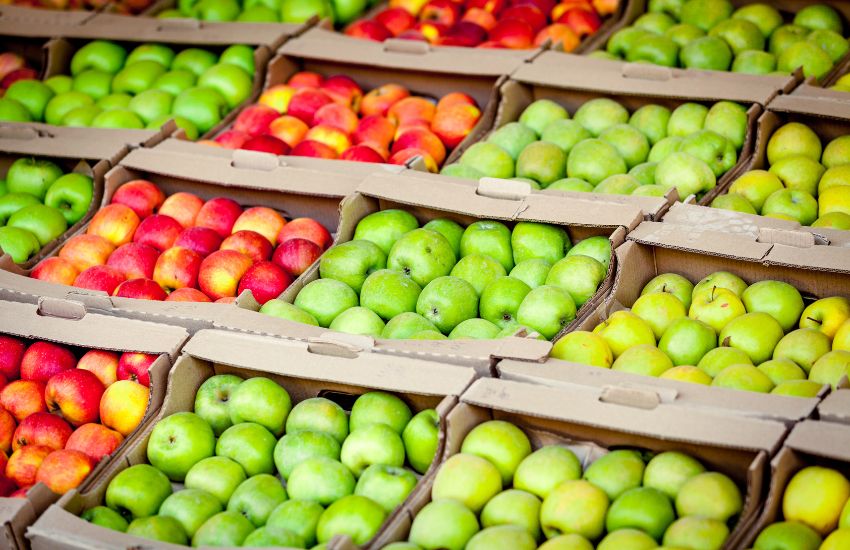
Now that you have gained insights into the numerous benefits of consuming apples, let’s delve into the fascinating realm of apple sweetness levels. It is worth noting that there exists a vast array of apple varieties, each exhibiting different levels of sweetness.
The sweetness of an apple is primarily determined by its sugar content or Brix levels. A sweeter apple naturally contains higher amounts of sugar. However, it is essential to note that even sweet apples can possess varying degrees of acidity. Nevertheless, the natural sugars present in the fruit often overshadow any tartness, resulting in a delightful and more adorable apple experience.
As mentioned earlier, the sweetness of apples is quantified using the Brix scale. Each degree on the Brix scale represents one gram of sucrose in every 100 grams of solution, providing a standardized measurement for assessing the sweetness of apples and other fruits.
What Are the Sweetest Apples?
Apple Sweetness Chart
| Types of Apples | Sweetest Level | Best For |
|---|---|---|
| KIKU® (HIGH FLAVOR APPLES) | Super Sweet & Juicy. | Quite possibly the sweetest apples you’ll ever taste. Incredibly juicy and crisp. |
| FUJI | Sweet & Juicy | Dense white flesh that is low in acid, crisp and sweet. A fan favorite |
| ENVY™ (HIGH FLAVOR APPLES) | Incredibly Crisp & Sweet | Sweet, firm white flesh that is slow to brown when cut. Perfect for snacking and desserts. |
| AMBROSIA™ (HIGH FLAVOR APPLES) | Sweet as Honey | Crisp and juicy with a unique honey-like flavor. America’s newest favorite apple. |
| GALA | Sweet and Mild | Creamy white flesh with low acidity. Mild and pleasant with a perfect sugary sweet balance. |
| JONAGOLD | Crisp & Juicy | Mild flavor with slight acidity and pleasant aroma. Firm texture and crunch |
| PACIFIC ROSE™ (HIGH FLAVOR APPLES) | Sweet & Refreshing | Pretty all-over blushed appearance and incredibly unique flavor. |
| GOLDEN DELICIOUS | Mild and Balanced | Sweet, crunchy with a hint of acid to balance its flavor. A wonderful cooking apple. |
| RED DELICIOUS | Dark Red and Mild | A dense, mild apple with a very distinct shape and crunch. |
| HONEYCRISP | Sweet, Tart & Aromatic | Refreshing, sweet flesh with exceptional crunch and juice. |
| KANZI® (HIGH FLAVOR APPLES) | Intense Flavor | Extreme juice and crunch with a flavor punch. One of Europe’s favorite apples. |
| BRAEBURN | Tangy and Crisp | A dense, high acid apple that’s juicy and crisp. Perfect for pairing with savory dishes. |
| JAZZ® (HIGH FLAVOR APPLES) | Tangy Effervescence | Sweetly tart with an intense crunchy, fresh flavor and zing. A firm texture with tang. |
| PINK LADY® | Dense, Tangy & Sweet | Firm flesh with a balanced sweet/tart bite and pretty pink-blushed appearance. |
| GRANNY SMITH | Tart, Acidic and Subtly Sweet | Firm and juicy with a thick skin and amazing tartness perfect for fresh apple pie. |
The Sweetest Apples, from Sweetest to Tartest
Fuji Apples

The sweetest apple you can find in grocery stores is the widely available Fuji. These apples come in various colors, from yellow to green to red. Fuji apples are known for their high natural sugar content and low acidity, allowing the sweetness to shine through.
In Japan, Fuji apples are often used in festivals. They are put on sticks and coated with candy or caramel to create what we know as candy apples!
Luckily, Fuji apples are available year-round because they have a long shelf life and are grown in warm climates around the world. These apples have a dense texture that is perfect for eating raw or cooking.
On the Brix scale, Fuji apples have a sweetness level of 15-18 degrees, making them incredibly sweet. They are also very versatile, whether you stew, roast, or bake them in your favorite recipes. From crumbles to pancakes to coleslaw, they complement any dish beautifully.
Kiku Apples
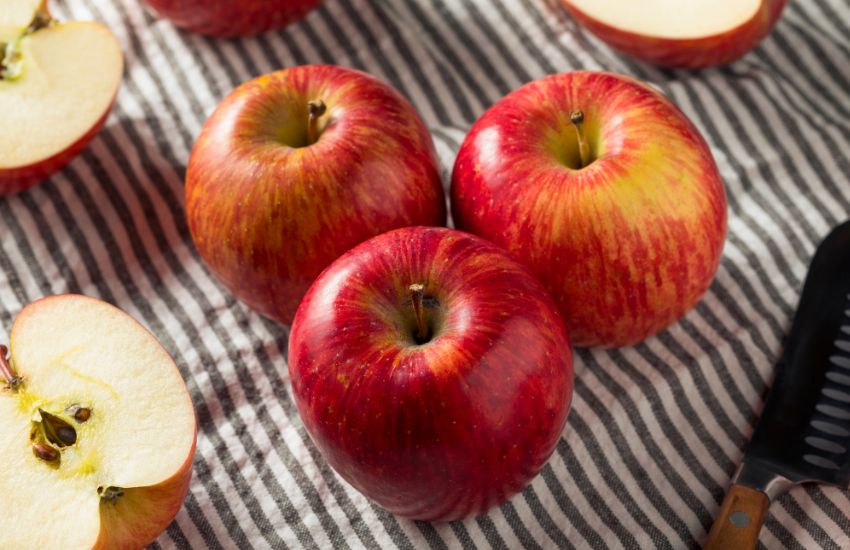
Kiku apples are a modern apple variety that resulted from a chance natural mutation of the super-sweet Fuji Apple. They are lovely and juicy, with firm and crunchy flesh. Kiku apples are wonderful to eat fresh as a quick snack or sliced in salads.
The Kiku “bud sport” of the “Fuji has a brighter red striped coloring than the Fuji and is thought to be more attractive to the eye. Although the flavor is similar, Kiku apples can be considered “Red Fuji” apples.”Brix readings are a guide for target sugar levels in fruit. The higher, the better, but there is quite a lot of variation from year to year. Light crops tend to have higher brix levels, while heavy crops will be on the low end.
Kiku apples have a sweetness level of 16-17 degrees Brix. They are ruby red with light-colored stripes, similar to “Red Fuji” apples.”Whether you enjoy them as a healthy snack or include them in your fruit bowl, Kiku apples are a great choice due to their sweetness, crispness, and juiciness.
Envy apples
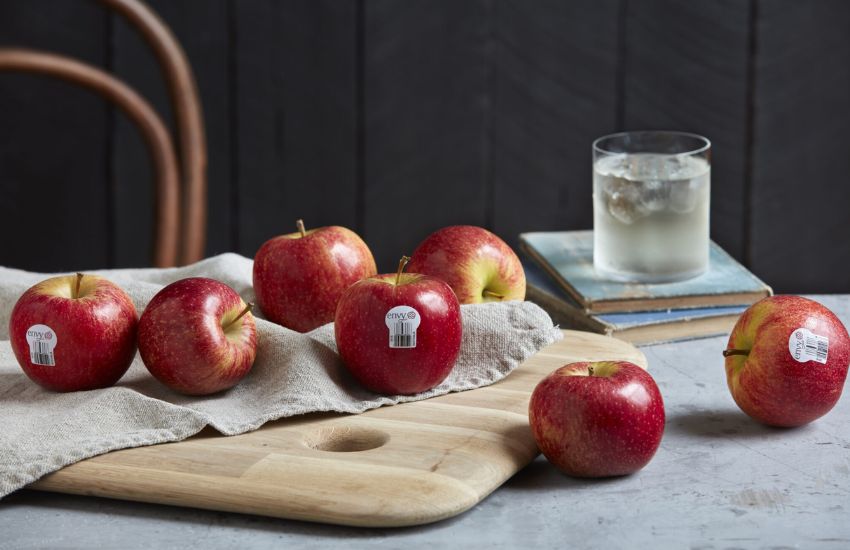
Envy apples are a modern variety bred for a perfect balance of sweet and tart flavors. Developed initially in New Zealand, they are now grown worldwide.
Envy apples were created by crossing the sweet Royal Gala apple with the spicy and refreshing Braeburn apple. They have a crisp, sweet flesh that stays white long before turning brown.
Compared to other apples, Envy apples have thicker skin with tiny pores called lenticels. The more lenticels, the sweeter the apple.
Envy apples’ sapples’ste and crunch make them great for on-the-go snacks or use in various recipes. They are also delicious in cakes, pastries, crumbles, pies, or diced in salads.
Ambrosia apples
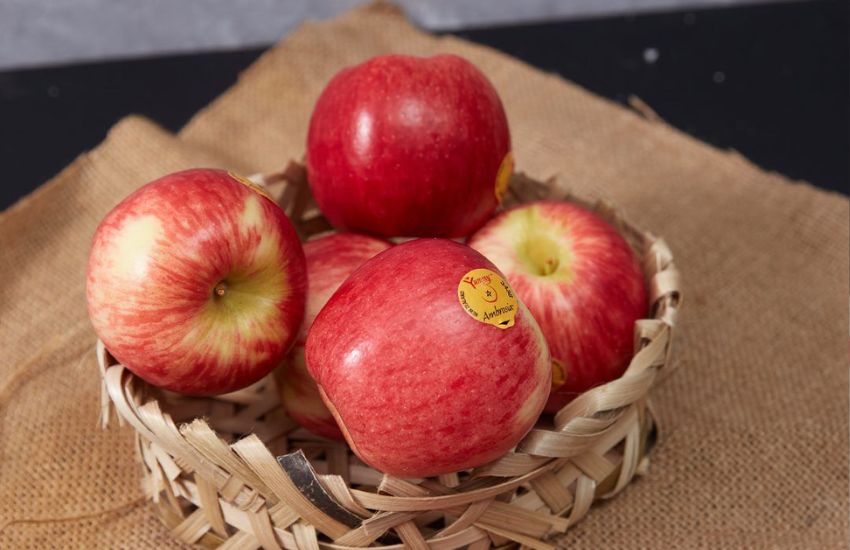
Ambrosia apples, discovered in 1987 as a chance seedling in British Columbia, Canada, are renowned for their full-bodied, sweet, and rich taste. The name ‘Ambrosia‘ translates to ‘the food of the Gods,’ which perfectly reflects the apple’s flavor. These apples have low acidity, allowing their natural sugars to take center stage.
Although the parentage of Ambrosia apples remains unknown, they are distinguished by their honey-sweet juiciness and captivating floral aromas. While less widely available than Fuji apples, Ambrosia apples are becoming increasingly popular and can be found in more grocery stores.
Ambrosia fruits are typically sold in America and Canada from October to March. However, imported Ambrosia apples from New Zealand or Chile are available in spring and summer.
Gala apples
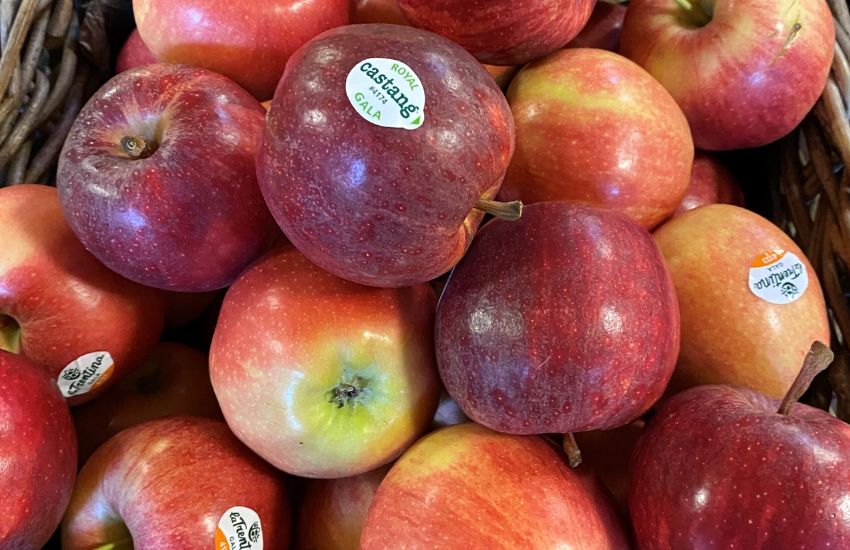
Thanks to their sweet flavor, Gala apples are a popular choice worldwide, especially with kids. This apple variety was developed in New Zealand and is rapidly gaining popularity in the United States. A cross between Kidd’s OrKidd’sed apples and Golden Delicious apples, Gala apples are absolutely delicious whether you buy them from the store or grow your own apple tree in your backyard.
Gala apples are known for their beautiful red coloring with yellow stripes. While they start out as a very light-colored Cox with orange streaks over yellow, mature Gala apples are much darker, often a solid red. Unlike some sweet apple varieties, Gala apples retain their shape well when cooked and can be used in various recipes that call for sweet apples.
In addition to their natural sweetness, Gala apples have a hint of tartness in their flavor, giving them a unique taste profile. They have a pear-like honey flavor that makes them famous worldwide. Moreover, Gala apples are the parent of many other sweet apple varieties. You can find Gala apples in almost every supermarket, or you can choose to plant your own Gala apple tree in your yard for a fresh supply.
Jonagold apples
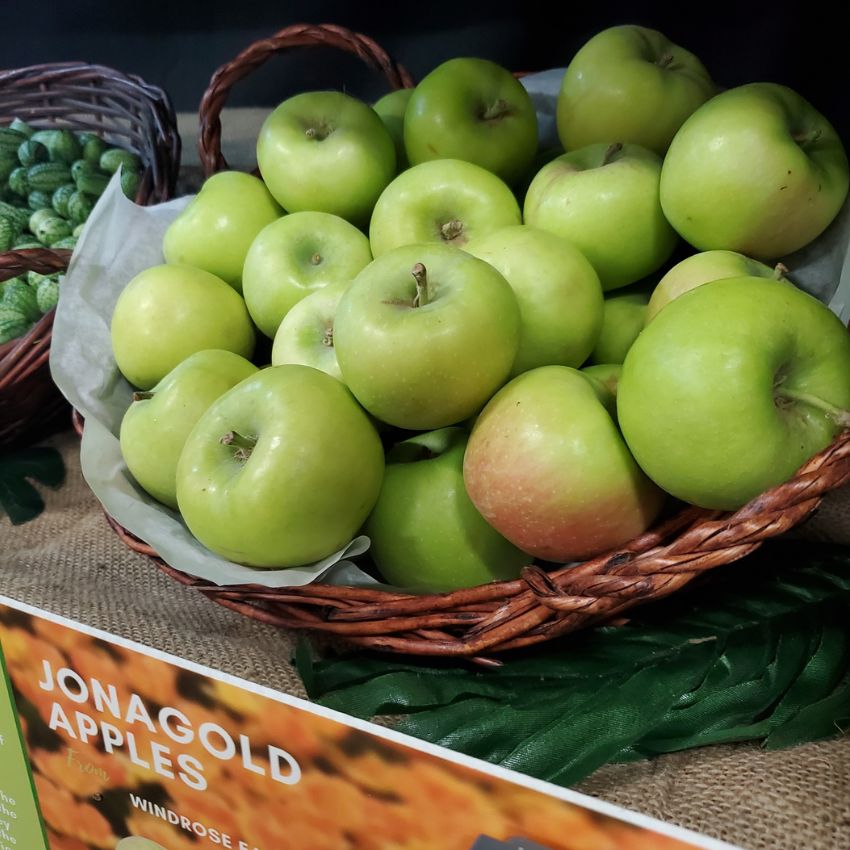
Jonagold apples were explicitly developed by crossing the lovely Golden Delicious apple with the intricately flavored Jonathan heirloom apple. The result is a delightful combination of sweetness and tartness, making Jonagold apples an exceptional choice for fresh consumption.
Interestingly, the Jonagold apple is believed to be one of the parent varieties of the delectably sweet Ambrosia Apple. This only further attests to the incredible taste profile of the Jonagold, solidifying its status as one of America’s apple varieties.
When it comes to sweetness, it’s wortit’sting that the level of sweetness in Jonagold apples increases as they ripen. Therefore, it is advisable to select apples picked at the peak of ripeness rather than those harvested prematurely for transportation and storage. This way, you can fully savor the remarkable flavor that Jonagold apples offer.
Pacific Rose apples
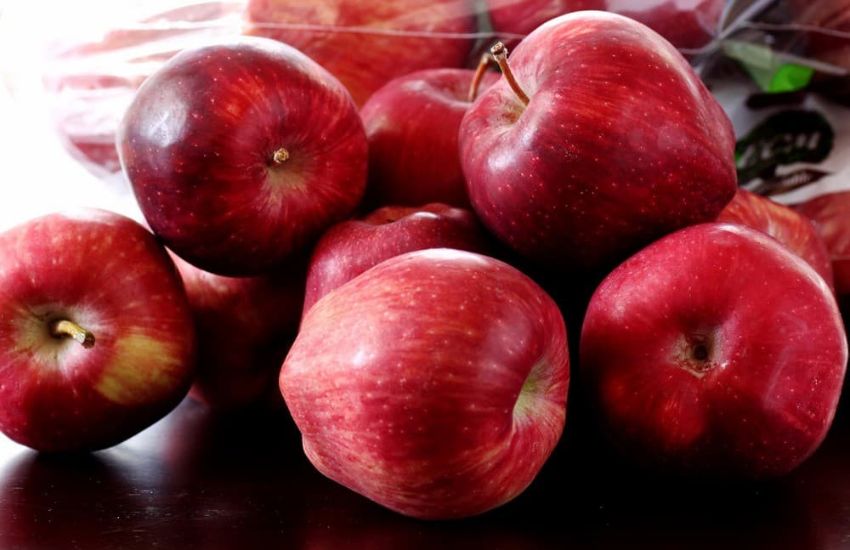
Pacific Rose apples are a type of dessert apple that is a cross between Gala and Splendor apples. They are known for their beautiful rosy-red blush, which makes them a popular choice among many households.
These apples are named after their pinkish hue and origin in New Zealand, a country surrounded by the Pacific Ocean.
While Pacific Rose apples are mainly enjoyed as a fresh snack, they can also be used in baked recipes to add a sweet and refreshing flavor with a crisp texture. Due to their visually appealing appearance, they are often used to enhance the presentation of cheese boards, making them both decorative and delicious.
Golden Delicious apples
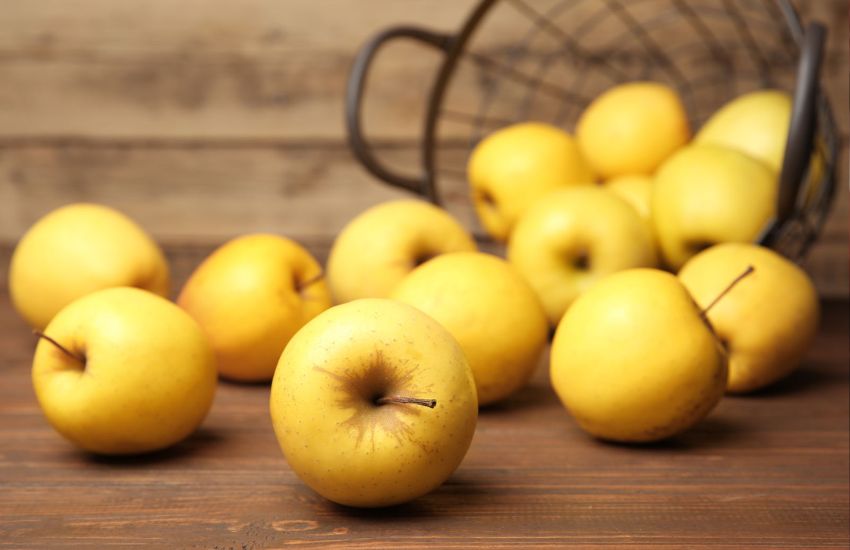
Golden Delicious apples are a lovely variety characterized by their pale green to golden yellow skin. They are a chance seedling apple and have grown in popularity. While the under-ripe green apples are known to be quite tart, a perfectly tree-ripened Golden Delicious is often sugary-sweet.
Although they are great for eating as they are, they also work well in multiple different recipes. Fresh, raw apple slices are great to add to various leafy, fruit, or grain salads.
Golden Delicious apples also have the necessary acid content and stability for baking in many different recipes. Try baking them into crumbles, tarts, cakes, pastries, and bread.
Golden Delicious apples are among the sweetest yellow-green apples, as many other apples with green peels can be quite tart. They are great for juicing fresh apple juice in your refrigerator!
Red Delicious apples
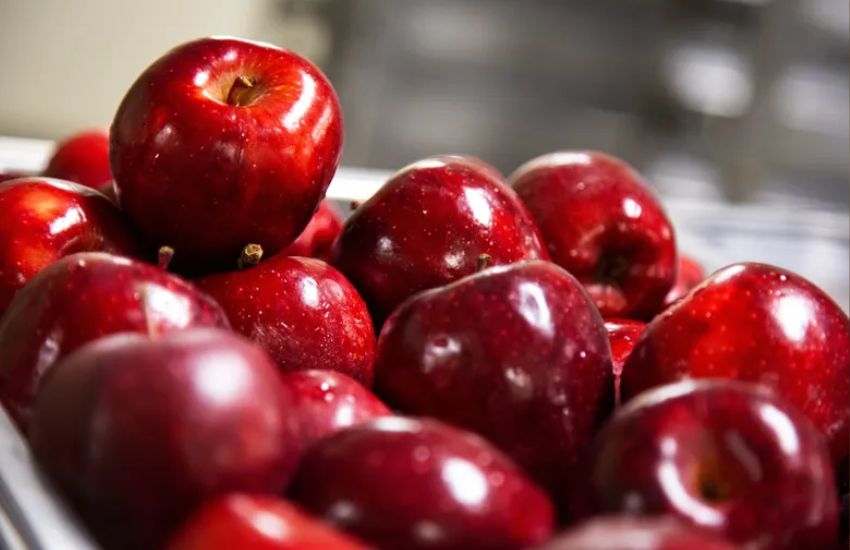
The name says it all! Red Delicious apples are incredibly popular worldwide. They have a flavor combining sweetness and tartness, which is a big part of their love.
Contrary to what many believe, Red Delicious apples are not closely related to Golden Delicious apples, even though they’re othey’rerketed as such.
While they may not be the best choice for cooking, Red Delicious apples are fantastic for snacking and adding to fruit salads. They are the epitome of a sweet, red American apple. Their flavor is lovely, although somewhat mild. When you taste a fresh, Delicious apple straight from the orchard, you’ll understand why it’s so it’s!
It’s also worth noting that the Red Delicious apple is one of the parent apples of the Fuji variety and is considered one of the sweetest commercially produced apples in the world. So, while Red Delicious and Golden Delicious may share a marketing connection, they are not closely related genetically.
Honeycrisp apples

Honeycrisp apples have a unique and balanced sweet taste due to their high natural sugars and acidity levels. This distinctive flavor has made them a must-have during the farmers’ Farmers’ fall season. In addition to their taste, Honeycrisp apples offer a delightful crunch that makes them incredibly satisfying. You can easily find them at most grocery stores when they are in season.
One of the great things about Honeycrisp apples is that they maintain their sweet flavor even when cooked. This makes them perfect for a wide variety of recipes. You can remove the skin and slow-cook slices to make delicious applesauce, preserves, or apple butter.
Furthermore, the texture of a Honeycrisp apple adds a special touch to raw dishes such as salads and coleslaws. Thinly sliced Honeycrisp apples can also provide a nice bite to sandwiches and burgers.
Not only are Honeycrisp apples known for their taste and texture, but they are also quite impressive in size, making them visually appealing. Their flavor is further enhanced by an effervescent, spicy, honey-like aroma.
You may even grow your Honeycrisp Apple trees at home if you’re an apple lover. This way, you can have a fresh supply of these delicious apples in your backyard.
Kanzi apples

Kanzi apples, which are sweet, are a result of European breeding. These apples were bred explicitly from the Gala and Braeburn varieties. Regarding appearance, the Kanzi apple is quite similar to its sibling, the Jazz apple.
Both of these apples are visually appealing. However, what truly sets the Kanzi apple apart is its exceptional taste. It offers a delightful combination of sweetness and tartness, creating a well-balanced flavor that will please any palate.
Braeburn apples

Braeburn apples are a remarkable success story of an accidental seedling in New Zealand. Known for their crunchy texture and sweet-tart flavor with hints of nutmeg and cinnamon, Braeburns have gained popularity.
This apple variety can be easily identified by its reddish hue, with undertones ranging from yellow to light green and additional red stripes. The color of Braeburn apples may vary depending on the growing conditions and temperatures they are exposed to.
When grown under optimal conditions, there is no doubt that Braeburn is considered one of the finest dessert apples available.
While Braeburn is relatively easy to cultivate in your backyard, it is essential to note that these apples thrive in warm but not excessively hot climates. They can be successfully grown in regions like the southern UK and most parts of America.
Jazz apples
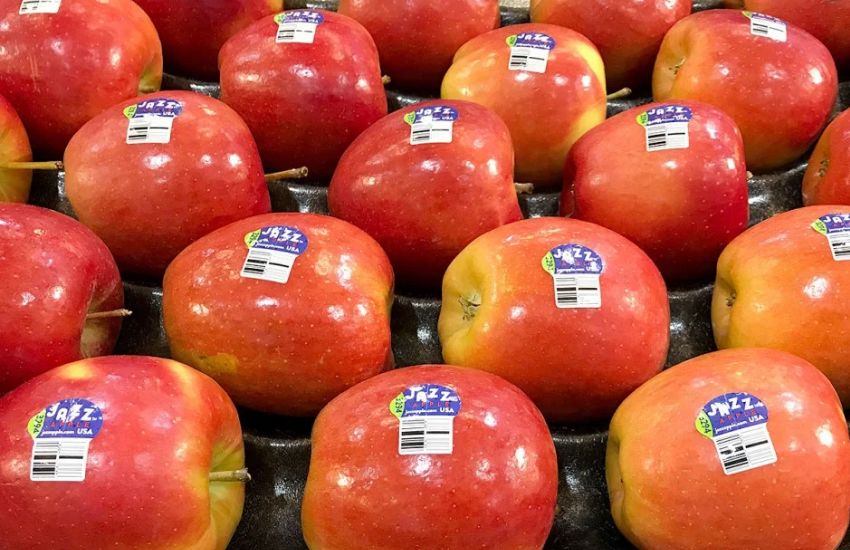
Jazz apples, a renowned cross between Royal Gala and Braeburn varieties, have gained immense popularity since their development in New Zealand. These apples possess a vibrant and dynamic flavor profile, balancing sweetness with a hint of tartness that can evoke notes of pear or honey.
Jazz apples’ juicy, crisp, and dense butter-yellow flesh is a delight to savor. Adorned with rosy red skin, occasional splashes of orange, green, or vibrant color are believed to contribute to the distinctive flavor of Jazz apples. Poorly-colored apples may taste more akin to Braeburn.
Like their sibling, Envy apples, Jazz apples are versatile and excel in cooked recipes and as a refreshing snack. While they have a firm and fine-grained texture, making them slightly challenging to bite for weak teeth, their firmness also grants them excellent resistance to bruising. This makes them an ideal choice when selecting apples at the grocery store, as you are less likely to encounter a batch of bruised Jazz apples.
Jazz apples are typically available towards the end of the season. In Northern Europe and North America, locally grown fruits can be found in grocery stores around November/December, while apples from the Southern Hemisphere become available in May as an alternative option.
Pink Lady apples

Pink Lady apples are a popular choice among apple enthusiasts. Known for their sweet-tart taste, these apples have high sugar and acid levels, providing a crisp and refreshing bite.
Originating from Australia, Pink Lady apples were created by crossbreeding a Golden Delicious apple with an Australian apple variety called Lady Williams. This unique combination resulted in a stunningly vibrant pink-skinned apple with a distinct flavor that has become a household favorite worldwide.
Pink Lady apples thrive in hot environments, which enhances their beautiful coloration. However, they are cultivated across the globe. These apples are known for their durability and excellent storage capabilities, allowing us to enjoy them throughout the year.
The Pink Lady apple season runs from October to July, while organic Pink Lady apples are available from October to June. These premium club apples feature an attractive red-pink peel and offer a well-balanced sweet-tart taste. They are delightful when eaten fresh and perfect for making apple pies and applesauce, especially if you want the sauce to have a pink hue by leaving the skin on the fruit.
Granny Smith apples
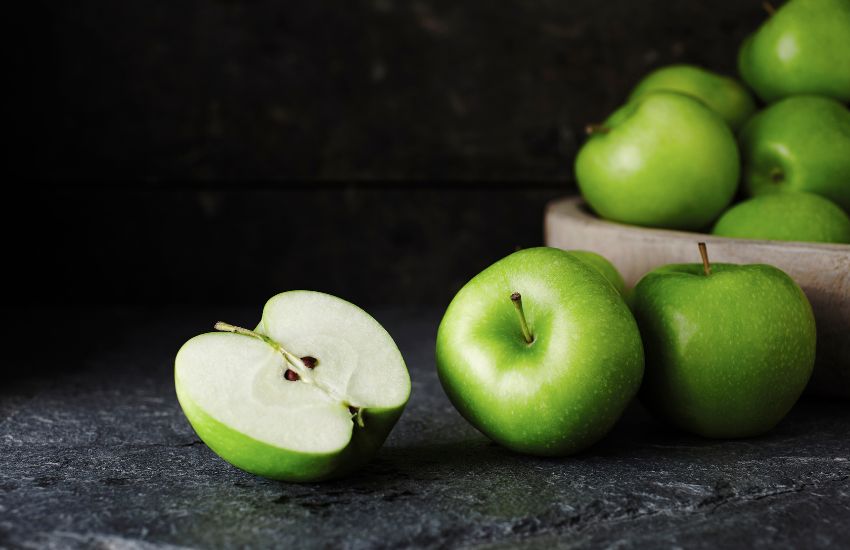
The Granny Smith apple, also known as the green apple or sour apple, is a type of apple that originated in Australia in 1868. It was named after Maria Ann Smith, who discovered the cultivar from a chance seedling. The tree is believed to be a hybrid of the European wild apple, Malus sylvestris, and the domesticated apple, Malus domestica.
This apple has a firm and rugged texture, with light green skin and crispy, juicy flesh. It has a tart and acidic flavor. It retains its firmness when baked, making it a popular choice for cooking apple dishes such as pies, which can be sweetened. As it ripens, the apple changes from utterly green to yellow.
According to the US Apple Association’s 2019, the Granny Smith apple ranked third most popular in the United States. Its light green color makes it easily recognizable, and it is widely used in various apple recipes such as apple pie, apple cobbler, apple crumble, and apple cake. Additionally, some companies, like Woodchuck Hard Cider, produce cider using Granny Smith apples.
In summary, apples offer a rich tapestry of flavors and health benefits, making them a top snack choice. From the super sweet Fuji to the tangy Granny Smith, there’s an apple to satisfy every palate. Remember, the best time to eat apples is in season for peak flavor. Visit Farm to Plams or download our Appstore today to order the freshest, sweetest apples right to your door. Don’t miss out on nature’s candy – indulge in the best apples available!

